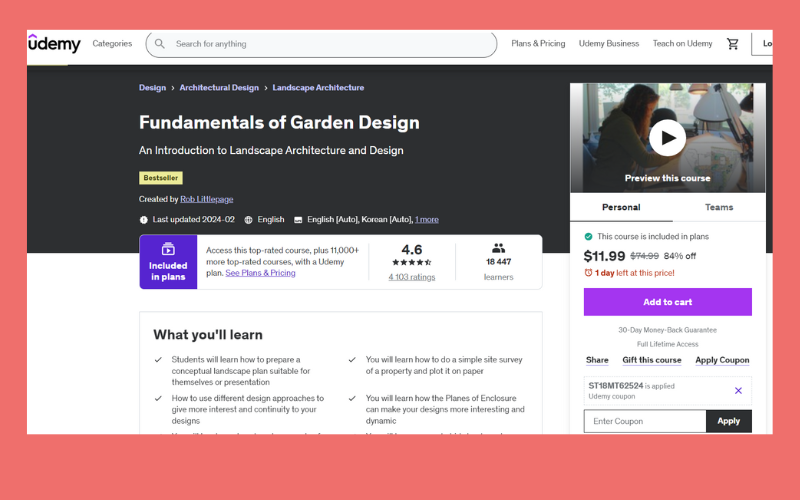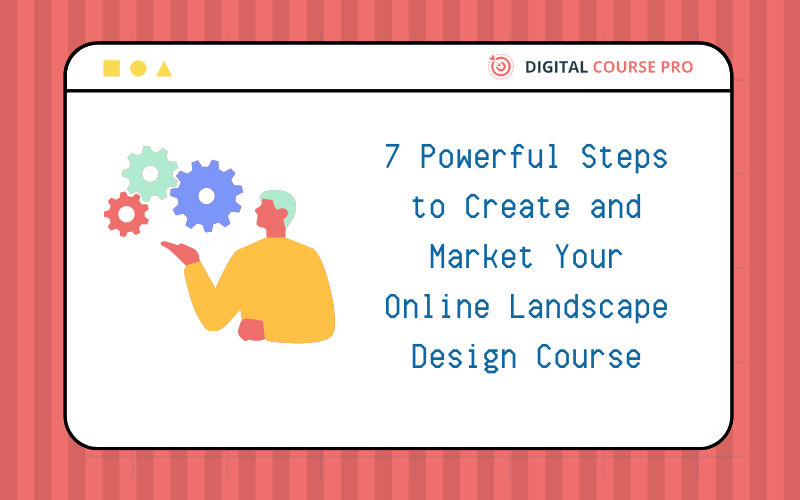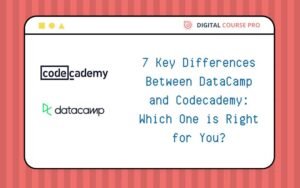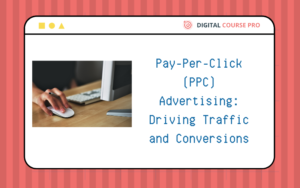Creating an online landscape design course can be a rewarding way to share your expertise and generate income. In this detailed guide, I will walk you through the steps to create, launch, and market your own successful landscape design course. Let’s dive in!
1. Identify Your Niche and Audience
Research Your Niche:
To stand out, focus on a specific aspect of landscape design. Whether it’s sustainable landscaping, urban gardening, or backyard design, pinpoint your unique angle.
Know Your Audience:
Understand who will benefit most from your course. Are they beginners, DIY enthusiasts, or professionals looking to expand their skills? Tailor your content to their needs and skill levels.
2. Develop a Comprehensive Curriculum
Outline Your Course:
Break down your course into modules and lessons. Ensure it covers fundamental concepts, practical applications, and advanced techniques.
Create Engaging Content:
Use a mix of video tutorials, written materials, and interactive elements like quizzes. High-quality visuals and real-world examples are crucial in a design course.
Example Courses:
– “Sustainable Landscape Design” by EcoDesign Institute: Focuses on eco-friendly landscaping techniques.

– “Professional Landscape Design Certification” by ProLand Academy: Aimed at aspiring professionals.
3. Choose the Right Platform
Select an LMS:
A Learning Management System (LMS) like Teachable, Thinkific, or Kajabi can host your course. These platforms provide tools for content delivery, student management, and payment processing.
Consider Your Budget:
Evaluate the cost of different platforms and choose one that offers the features you need within your budget.
4. Produce High-Quality Course Content
Invest in Equipment:
Quality video content requires good lighting, a decent camera, and a microphone. A quiet, well-lit space will improve your recordings.
Edit Professionally:
Use video editing software to polish your videos. Add captions, graphics, and transitions to enhance the learning experience.
5. Build a Marketing Strategy
Create a Website:
A professional website can serve as the hub for your course. Include detailed information about your course, testimonials, and a blog to attract organic traffic.
SEO and Content Marketing:
Optimize your website and blog for search engines. Write articles on topics related to landscape design to attract potential students.
Email Marketing:
Build an email list and send regular updates, free tips, and promotional offers to keep your audience engaged.
Email marketing is a cornerstone of any successful online business, especially for digital course creators. With the right platform, you can streamline your communication, engage your audience, and drive conversions like never before. Whether you’re looking to nurture leads, build relationships, or promote your courses, selecting the best email marketing tool is crucial. In this blog post, we’ll explore some powerful strategies and tools to elevate your email marketing game.
If you’re eager to dive deeper into the specifics of different email marketing platforms, be sure to check out our in-depth reviews and comparisons. In our Flodesk Review for Digital Course Creators | 5 Game-Changing Benefits, we highlight how Flodesk can transform your email marketing with its stunning design capabilities and user-friendly interface.
For a comprehensive look at another top contender, read our MailerLite Review for Digital Course Creators | Excellent 5 Key Benefits, where we delve into the features that make MailerLite a standout choice for course creators. Lastly, if you’re trying to decide between two popular platforms, our MailerLite vs ConvertKit 2024 – Which is the Best Email Marketing Tool? article provides a detailed comparison to help you make an informed decision.
Explore these resources to find the perfect email marketing solution tailored to your needs and take your digital courses to new heights!
6. Utilize Social Media and Paid Advertising
In today’s digital age, promoting your online landscape design course requires a strategic approach to reach a wider audience. Leveraging the power of social media and paid advertising can significantly boost your course’s visibility and enrollment rates. By utilizing platforms such as Facebook, Instagram, and LinkedIn, you can engage with potential students, showcase your expertise, and build a community around your course. Additionally, investing in targeted paid advertising can help you reach specific demographics interested in landscape design, ensuring your marketing efforts are both effective and efficient.
Leverage Social Media:
Harnessing the power of social media is a game-changer when it comes to promoting your online landscape design course. Platforms like Facebook, Instagram, and LinkedIn offer unique opportunities to engage with potential students and showcase your expertise. Create compelling content, such as stunning visuals of landscape designs, behind-the-scenes looks at course creation, and student testimonials, to capture attention and build interest. Consistent posting and interaction with your audience can foster a sense of community and trust, making them more likely to enroll in your course. Don’t forget to use relevant hashtags and participate in landscape design groups to increase your reach and visibility.
Run Ads:
Invest in Facebook and Google ads to reach a broader audience. Target your ads based on demographics, interests, and behaviors relevant to landscape design.
7. Engage with Your Students
Create a Community:
Use platforms like Facebook Groups or Discord to foster a sense of community among your students. This encourages engagement and provides a space for support and feedback.
Offer Support:
Be available to answer questions and provide feedback. Regular Q&A sessions or live webinars can greatly enhance the learning experience.
Creating an Online Landscape Design Course with a Clean and Professional Look
Creating an Online Landscape Design Course with a clean and professional look is essential for attracting and retaining students. A well-organized and visually appealing course layout can significantly enhance the learning experience. By ensuring that your course materials are presented in a clean and professional look, you convey credibility and attention to detail, which are crucial for building trust with your audience. Use high-quality images, clear typography, and a consistent color scheme to maintain a clean and professional look throughout your course. This approach not only makes your content more accessible but also reinforces your brand’s professionalism and expertise in the field of landscape design.
Collect Feedback:
Gathering feedback is crucial for refining and improving your online landscape design course. By actively seeking input from your students, you gain valuable insights into their learning experience, course content effectiveness, and areas for enhancement. Utilize surveys, feedback forms, or one-on-one interviews to gather qualitative and quantitative data. Pay attention to constructive criticism and suggestions for improvement, as they can help you tailor your course to better meet the needs and expectations of your audience. Continuous feedback collection fosters a responsive learning environment and demonstrates your commitment to delivering a high-quality educational experience.
Practical Tips for Success
– Start Small: Begin with a pilot course to test the waters. Gather feedback and make improvements before scaling up.
– Stay Updated: Landscape design trends change. Keep your course content updated with the latest techniques and information.
– Network: Collaborate with other experts in the field to enhance your credibility and reach.
– Provide Value: Offer additional resources like templates, design software recommendations, and reading lists to add value to your course.
Creating and marketing an online landscape design course requires planning, dedication, and a willingness to adapt. By following these steps, you can build a course that not only educates but also inspires and empowers your students.





